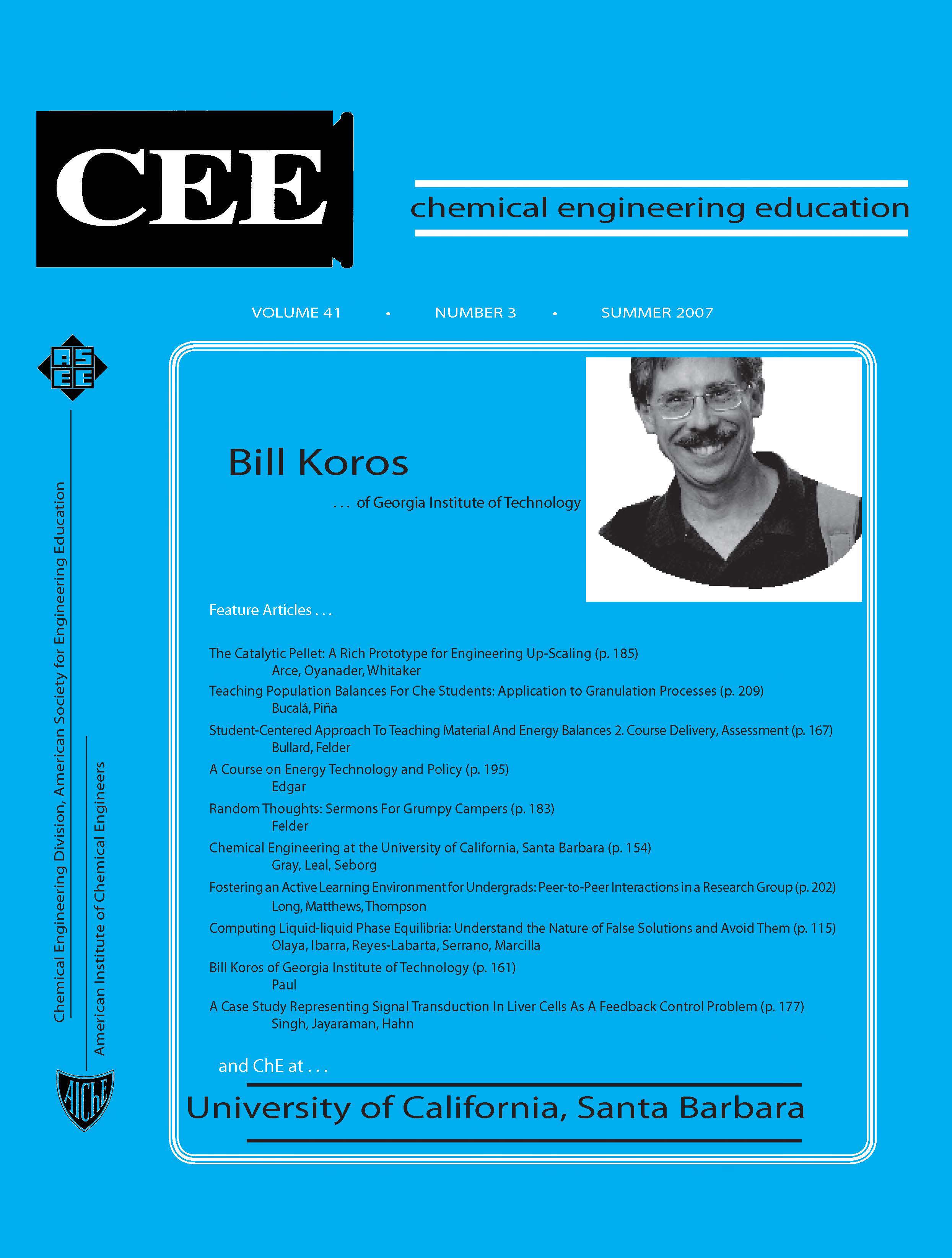Teaching Population Balances for Chemical Engineering Students: Application To Granulation Processes
Abstract
The population balance equation (PBE) is a useful tool to predict particle size distributions in granulation processes. When PBE is taught to advanced chemical engineering students, the internal coordinates (particle properties) are particularly hard to understand. In this paper, the flow of particles along different coordinates is carefully explained, making the analogy between the flow of particles in granulators and the flow patterns in chemical reactors, the latter being a well-known subject in chemical engineering.


